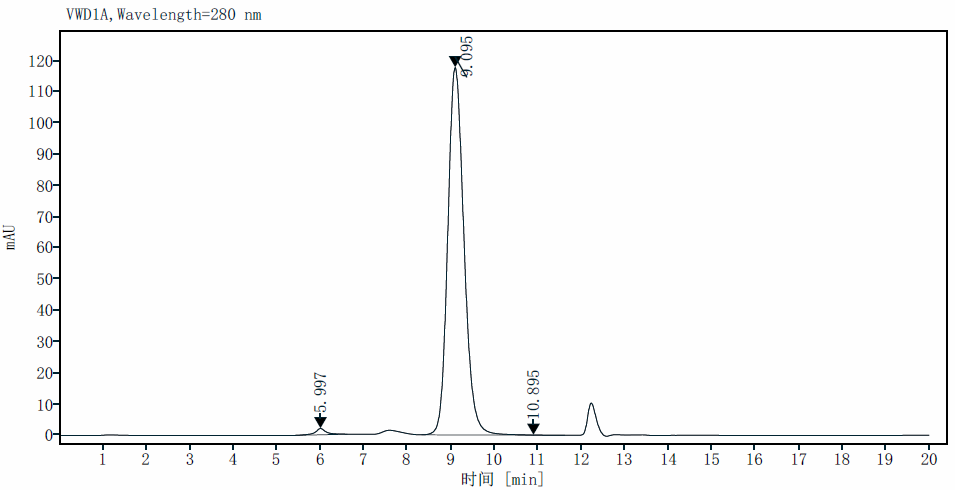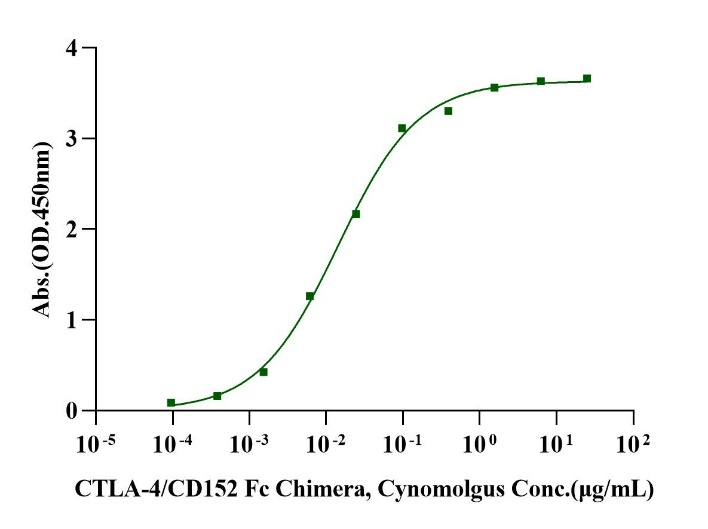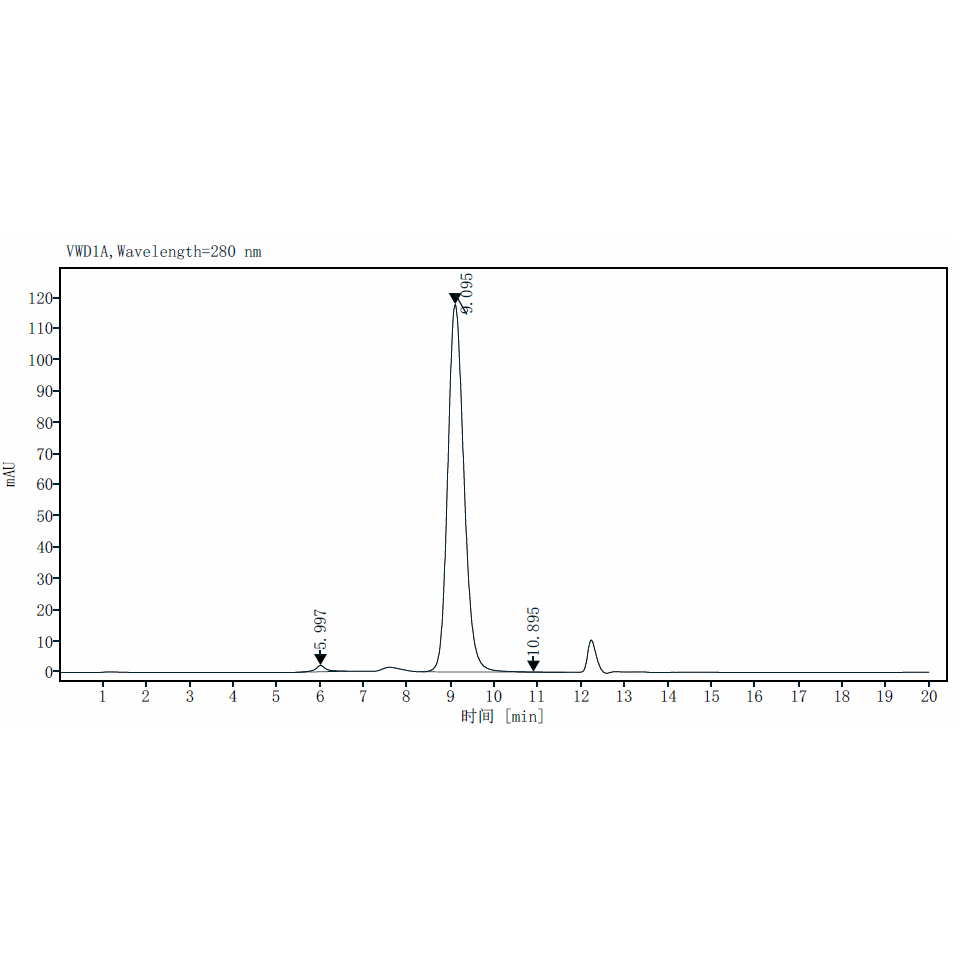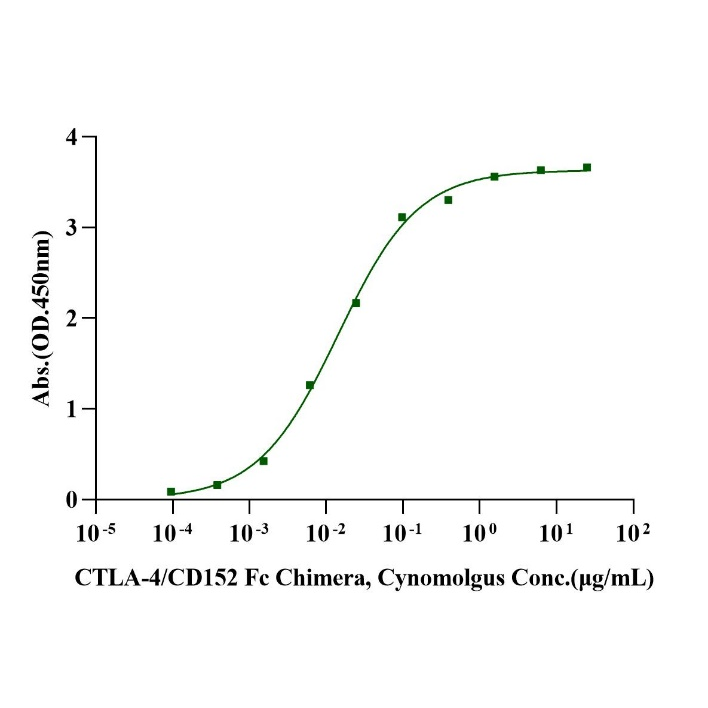1μg (R: reducing condition, N: non-reducing condition).
Product Details
Product Details
Product Specification
| Species | Cynomolgus |
| Synonyms | CTLA-4,CD152 |
| Accession | XP_005574071.1 |
| Amino Acid Sequence | Ala37-Asp161, with C-terminal hIgG Fc |
| Expression System | HEK293 |
| Molecular Weight | 43-50kDa (Reducing) |
| Purity | >95% by SDS-PAGE |
| Endotoxin | <0.1EU/μg |
| Conjugation | Unconjugated |
| Physical Appearance | Lyophilized Powder |
| Storage Buffer | PBS, pH7.4. |
| Reconstitution | Reconstitute at 0.1-1 mg/ml according to the size in ultrapure water after rapid centrifugation. |
| Stability & Storage | · 12 months from date of receipt, lyophilized powder stored at -20 to -80℃. · 3 months, -20 to -80℃ under sterile conditions after reconstitution. · 1 week, 2 to 8℃ under sterile conditions after reconstitution. · Please avoid repeated freeze-thaw cycles. |
| Reference | Kamiyama N, Saechue B, Sachi N, Dewayani A, Chalalai T, Ozaka S, Ariki S, Soga Y, Kagoshima Y, Ekronarongchai S, Hidano S, Kobayashi T. TRAF6 signaling in T cells is crucial for the pathogenicity of experimental autoimmune encephalomyelitis. Int Immunol. 2023 Dec 28:dxad055. Martella S, Lucas M, Porcu M, Perra L, Denaro N, Pretta A, Deias G, Willard-Gallo K, Parra HS, Saba L, Scartozzi M, Wekking D, Kok M, Aiello MM, Solinas C. Primary adrenal insufficiency induced by immune checkpoint inhibitors: Biological, clinical, and radiological aspects. Semin Oncol. 2023 Dec 6:S0093-7754(23)00083-0. |
Background
CTLA-4 (Cytotoxic T-Lymphocyte Antigen 4) is also known as CD152 (Cluster of differentiation 152), is a protein receptor that downregulates the immune system. Humanor mouse CTLA-4 cDNA encodes 223 amino acids (aa) including a 35 aa signal sequence, a 126 aa extracellular domain (ECD) with one Ig-like V-type domain, a 21 aa transmembrane (TM) sequence, and a 41 aa cytoplasmic sequence. It is found as a covalent homodimer of 41-43 kDa. Within the ECD, human CTLA-4 shares 98%, 68%, 71% and 83-86% aa sequence identity with cynomolgus, mouse, rat and porcine/bovine/rabbit/feline/canine CTLA-4, respectively. CTLA4 is similar to the T-cell co-stimulatory protein, CD28, and both molecules bind to CD80 and CD86, also called B7-1 and B7-2 respectively, on antigen-presenting cells. CTLA4 transmits an inhibitory signal to T cells, whereas CD28 transmits a stimulatory signal. Fusion proteins of CTLA4 and antibodies (CTLA4-Ig) have been used in clinical trials for rheumatoid arthritis.
Picture
Picture
SDS-PAGE
SEC-HPLC

ELISA

Immobilized B7-1/CD80 His Tag, Human (Cat. No. UA010085) at 5.0μg/mL (100μL/well) can bind CTLA-4/CD152 Fc Chimera, Cynomolgus (Cat. No. UA010827) with EC50 of 11.18-18.05ng/mL.




